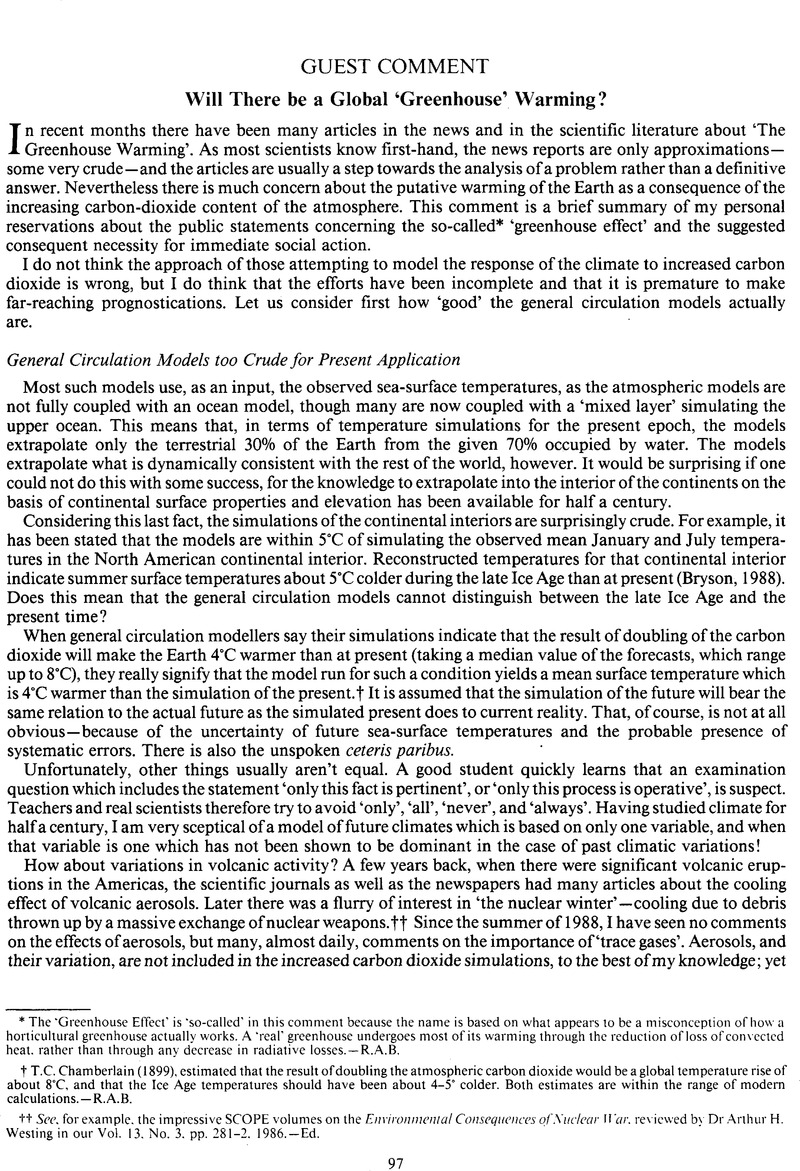Crossref Citations
This article has been cited by the following publications. This list is generated based on data provided by Crossref.
Fischer, Gad
1990.
Heat Pollution and Global Warming.
Environmental Conservation,
Vol. 17,
Issue. 2,
p.
117.
Gilland, Bernard
1990.
Energy for the 21st century: an engineer's view.
Endeavour,
Vol. 14,
Issue. 2,
p.
80.
Bardecki, Michal J.
1991.
WETLANDS AND CLIMATE CHANGE: A SPECULATIVE REVIEW.
Canadian Water Resources Journal,
Vol. 16,
Issue. 1,
p.
9.
Burness, H. Stuart
and
Martin, Wade E.
1994.
Environmental Economics & the Mining Industry.
Vol. 4,
Issue. ,
p.
107.



